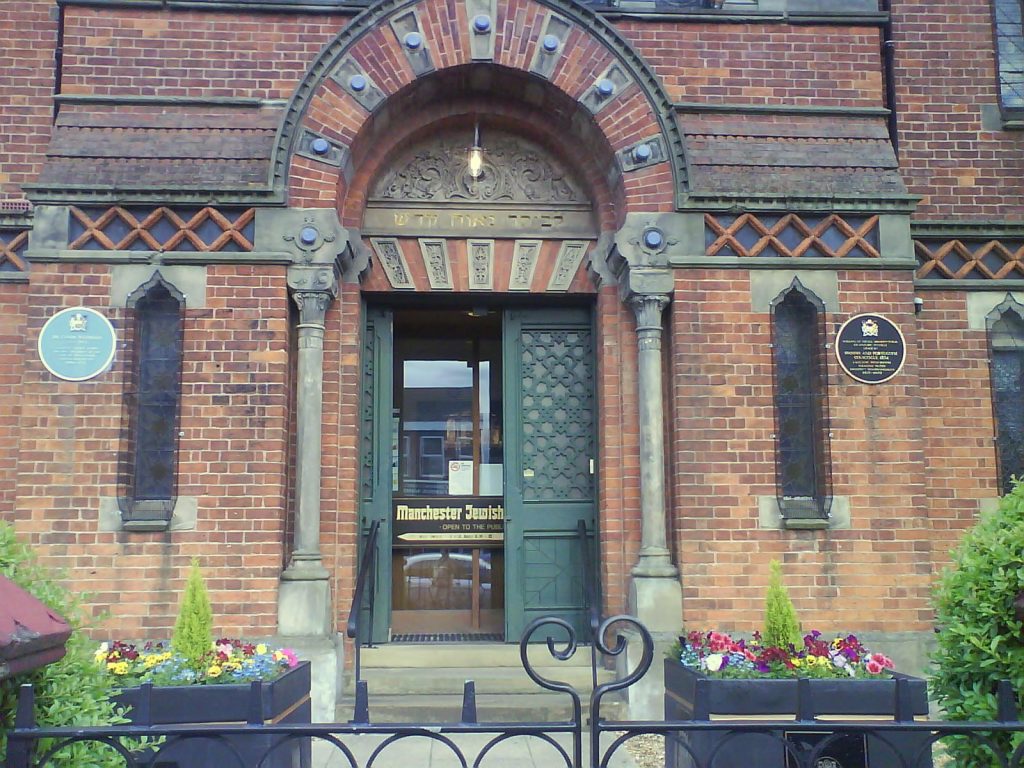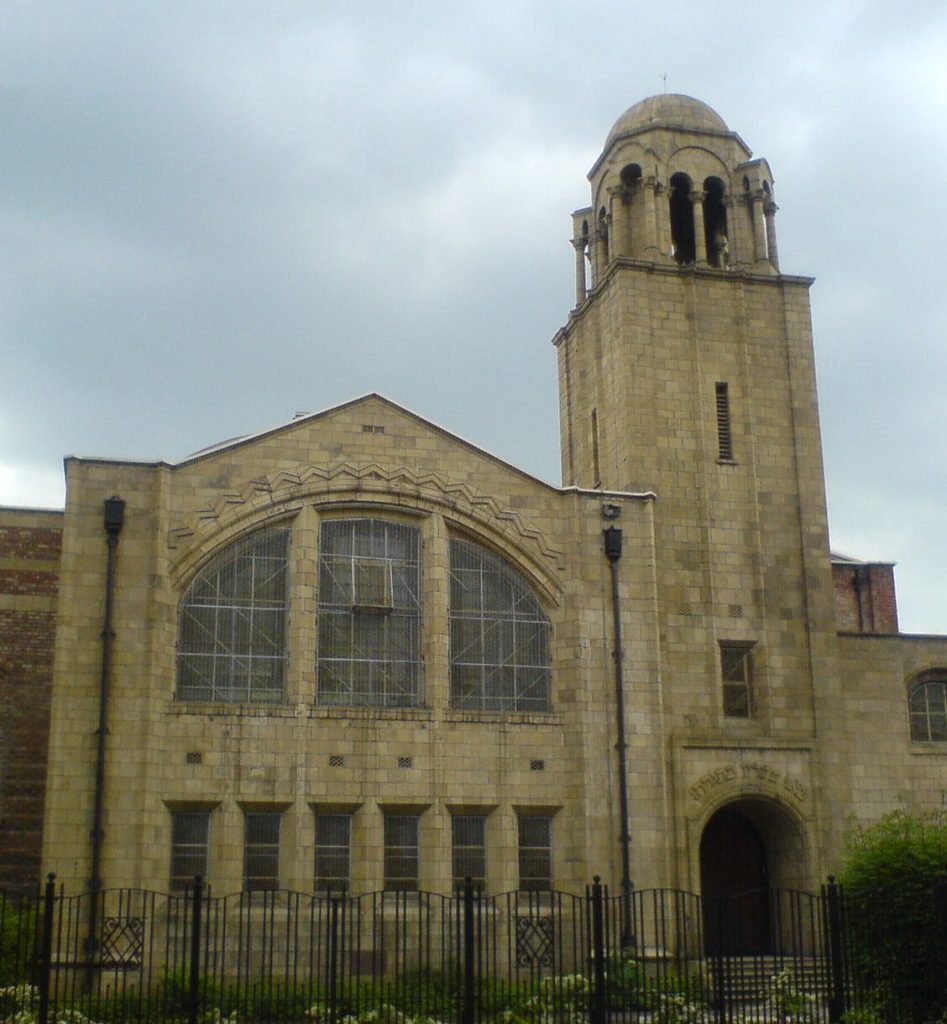With 30,000 Jews, Manchester has the highest Jewish population in Great Britain after London.
The Jewish presence in Manchester seems to date from the late 18th century, with many of them coming from Liverpool. Its first synagogue was built at this time, under the leadership of the brothers Lemon and Jacob Nathan. It moved to Garden Street in 1794, then to Ainsworth Court in 1806, to Halliwell Street in 1825, and finally to Cheetham Hill in 1856, completing this long nomadic cycle until the late 1970s. Land for a Jewish cemetery was acquired in 1794.

Development of Judaism in Manchester
In 1856, a liberal synagogue was established. At this time, Jews from Eastern Europe also arrived, fleeing persecution. In 1871, Jews from North Africa and the Middle East settled in Manchester. And at the end of the 19th century, following political events in Eastern Europe, more Jewish refugees crossed the Channel. As a result of these arrivals, two new synagogues were built in 1871. The first on Oxford Road for Jews living in the south of the city. The second was on York Street for Sephardic Jews.
Gradually, Mancunian Jews moved out of the city centre to the suburbs and small towns around. In Salford, Prestwich and Whitefield in the north. In Cheshire in the south. They worked largely in the crafts and cloth industries. Educational and cultural development also took place, for example with the establishment of the Jewish Telegraph newspaper.
In 1910, the city had nearly 70 synagogues for 35,000 Jews in its golden age. Manchester’s Jewish personalities included Labour leader Harold Laski, author Louis Golding, businessman Harry Sacher and one of the historic leaders of Marks & Spencer, Israel Seiff, as well as Chaim Weizmann, the future first Israeli president who lived there from 1904 to 1916. Israel Seiff brought together other businessmen to raise the funds to establish the Weizmann Institute in Israel.
During the Second World War, Manchester took in Jewish refugees. The community was very active in helping the British war effort.
Decline and rebirth of Jewish life
Manchester’s Jewish population began to decline from the 1970s. Twenty years later there were 27,000 Jews in Manchester and by 2001 there were less than 22,000. At that time there were 32 synagogues, the vast majority of which were Orthodox. Most Mancunian Jews lived in the suburbs of Bury and Salford.

By 2011, the Jewish population had grown to 25,000 Mancunians, and by 2021 to almost 30,000. Nevertheless, Mancunian Jews have been the victims of numerous antisemitic attacks over the past decade. Regular attacks on people and on the Jewish cemetery, when in 2018 dozens of headstones were destroyed. A study in the same year determined an increase of these attacks by 25%.
Synagogues active today include Bowdon Shul , opened in 1873 and the oldest congregation in South Manchester, Mead Hill Shul dating from 1904, the Orthodox Heaton Park Hebrew Congregation founded in 1935, and the Menorah Synagogue , which is a member of the Reform movement and also serves as a Jewish cultural centre for South Manchester residents.
Among the Jewish cemeteries of Manchester, we can mention Whitefield , Urmston , Southern , Pendleton , Rainsough et Prestwich Village .
Renovations and expansion of the Jewish Museum
The Jewish Museum of Manchester was established in 1984 to share the history of their presence in the city and their contribution to its development. It is housed in the former Spanish and Portuguese synagogue on Cheetham Hill built in 1874. Behind its red brick façade, the museum’s architecture blends Victorian and Moorish styles.
The Museum has been renovated and modernised. Its reopening in and extension opened in May 2021 allowed the public to discover the work undertaken. Amongst the objects on display are those belonging to the Jewish refugee Helen Taichner, recounting her journey and her joy and relief at being able to obtain a visa for England and settle in Manchester. In the same spirit, the various arrivals of Jews from three continents and their active participation in the development of Manchester are presented.
The city has suffered numerous anti-Semitic attacks, which have skyrocketed since the pogrom in Israel on 7 October 2023. Unfortunately not lacking in imagination, anti-Semitism attacks all sorts of targets. This was the case at the end of 2024 when the two busts of Chaïm Weizmann were stolen from the University of Manchester. The man who was to become the first President of the State of Israel taught at this very university at the beginning of the 20th century.
In January 2025, Liverpool’s under-18 team visited the Manchester Jewish Museum as part of the 80th anniversary of the liberation of Auschwitz. The aim was to give young people a better understanding of Judaism and the history of the Shoah, and to combat prejudice.